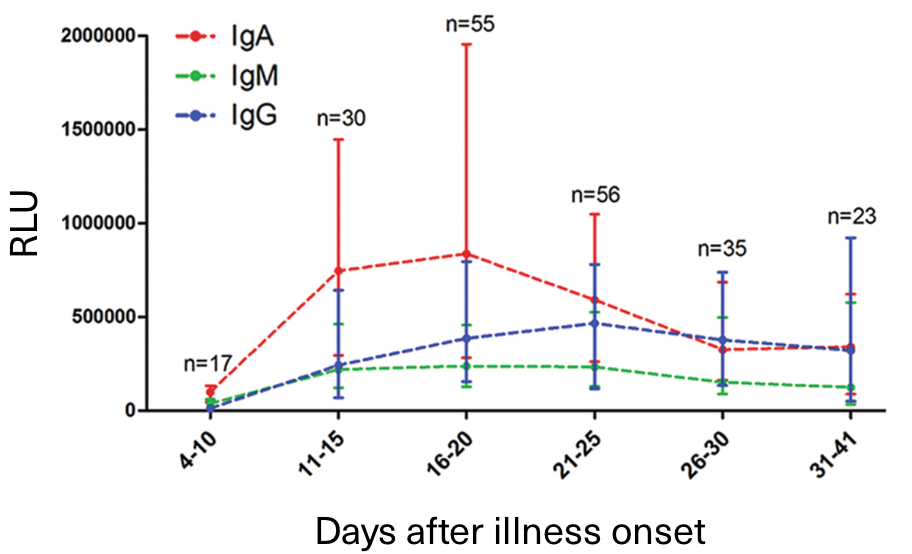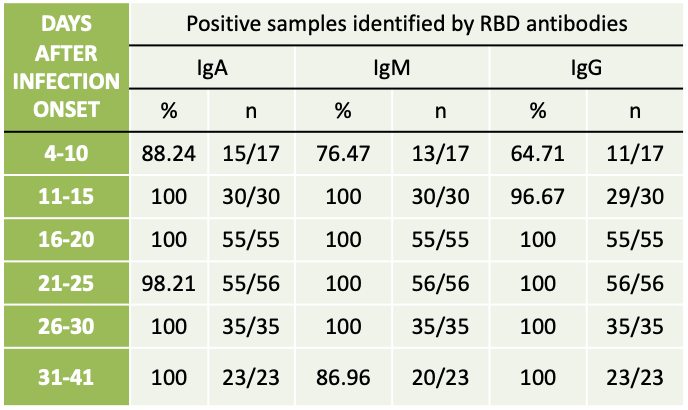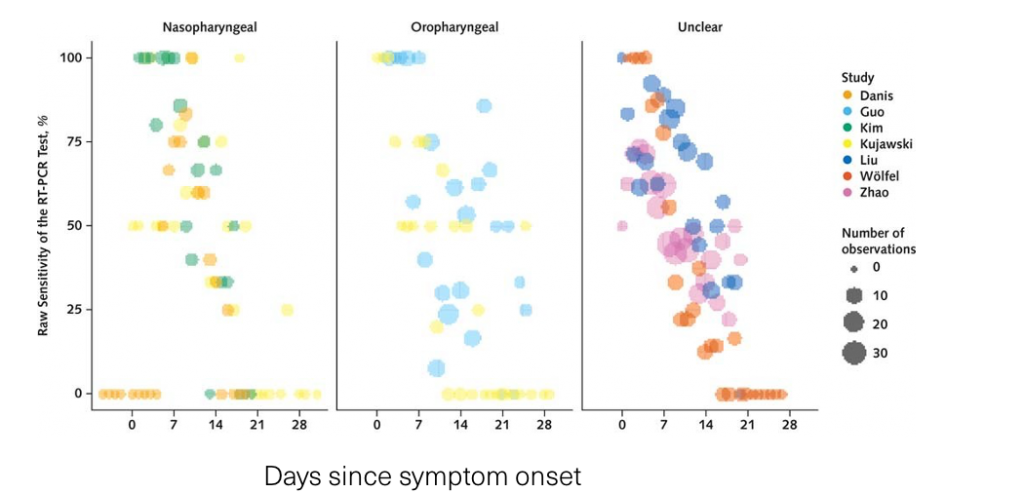Seroscreening
The science behind seroscreening
Here are the scientific articles that we are using to estimate the efectivity of seroscreening as a complement to diagnostic testing:
Seroconversion criteria
With respect to the appearance of the IgA, IgM and IgG antibodies, we use this Nature magazine article as a reference. It indicates that between days 9 and 15 of the infection (days 4 and 10 of the onset of symptoms) 88% of IgA antibodies, 76% of IgM and 64% of IgG are detected. From day 15 on, they are detected in almost 100% of cases.


Sensitivity of the diagnostic test
With respect to the sensitivity of RT-PCRs, we are using the most relevant publications on the topic of which we are aware, which talk about the rate of false negatives in RT-PCR of between 38% and 20% between days 5 and 8 of the infection (days 1 to 3 from the onset of symptoms and from 21% to 66% between days 9 and 21 (days 4 through 16 with symptoms).

Conclusion
The combination of these two sources of information indicate that seroscreening may be a more sensitive method of finding possible carriers even though it lacks diagnostic value. In any case, we rely on the results of the experience in Andorra and of other clients which confirm the usefulness and efectiveness of this method.
